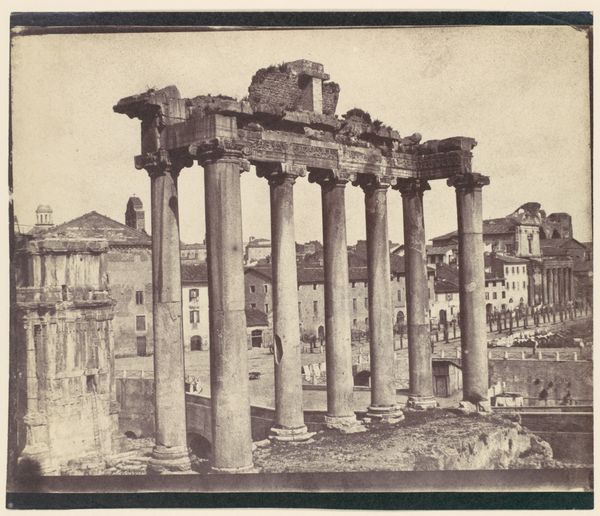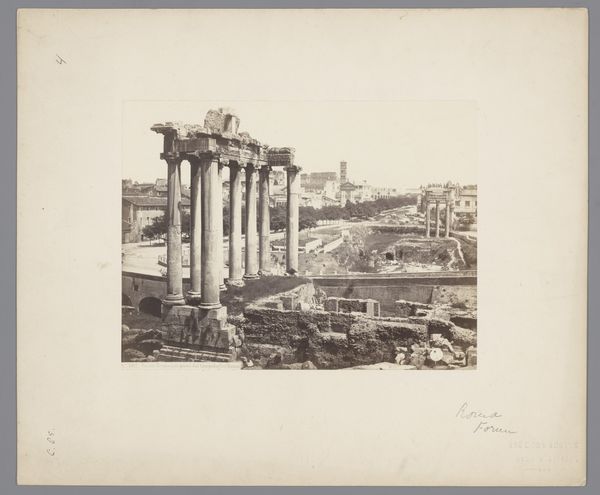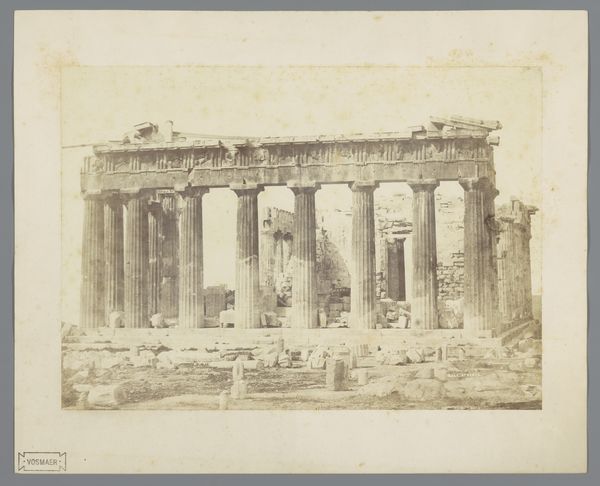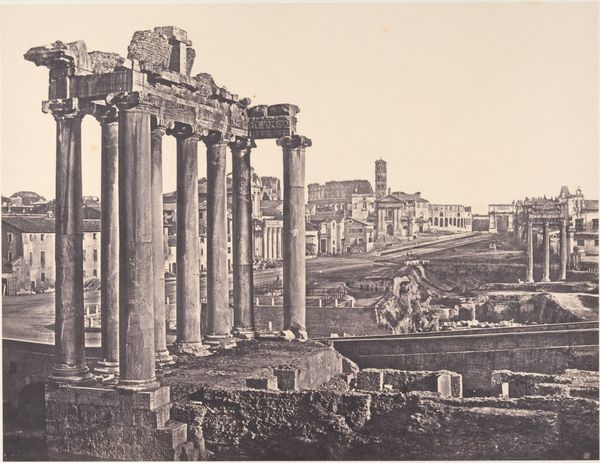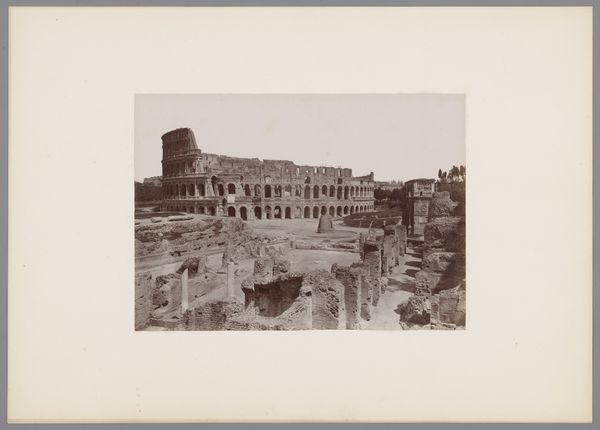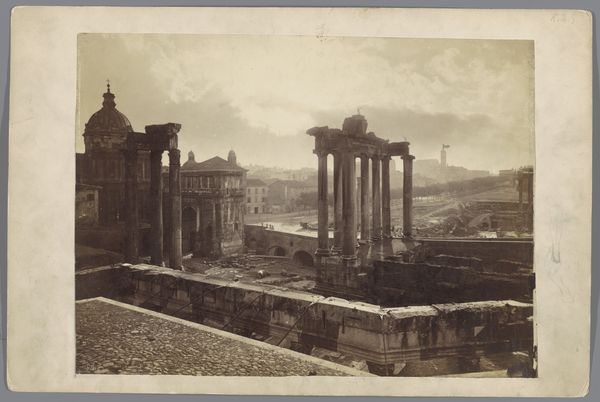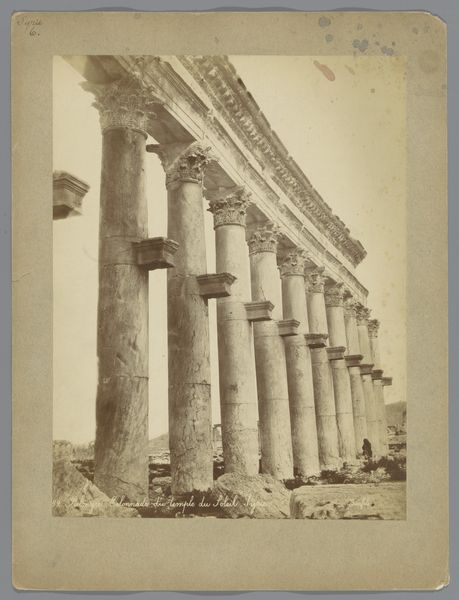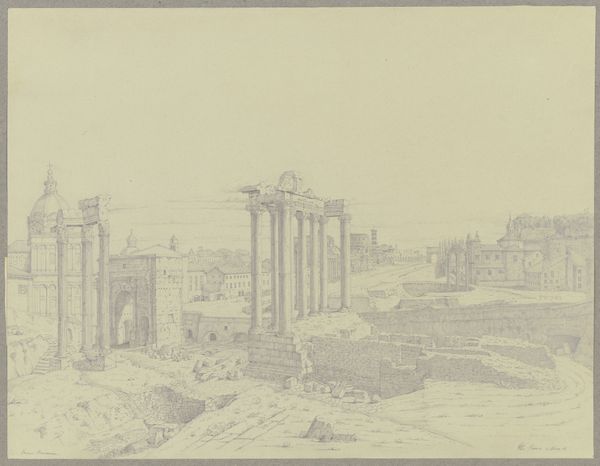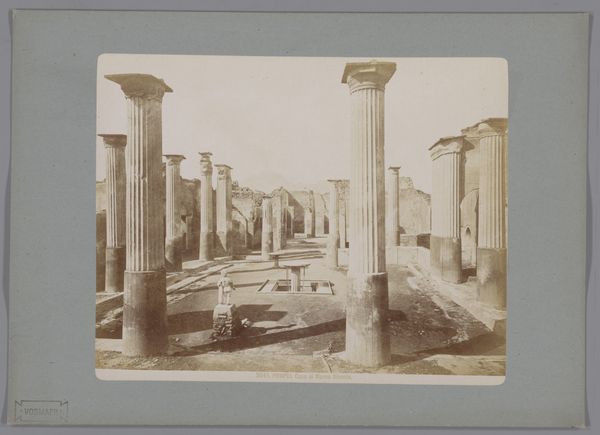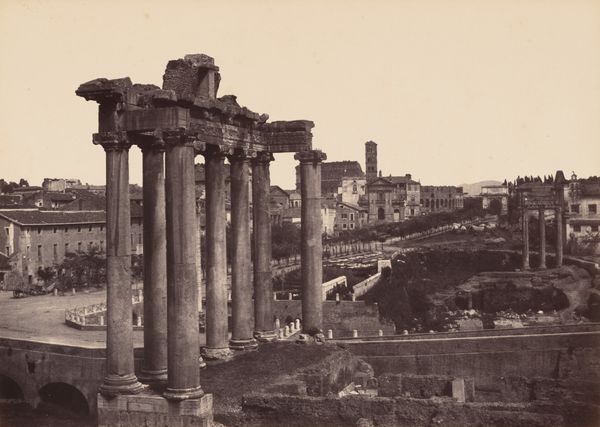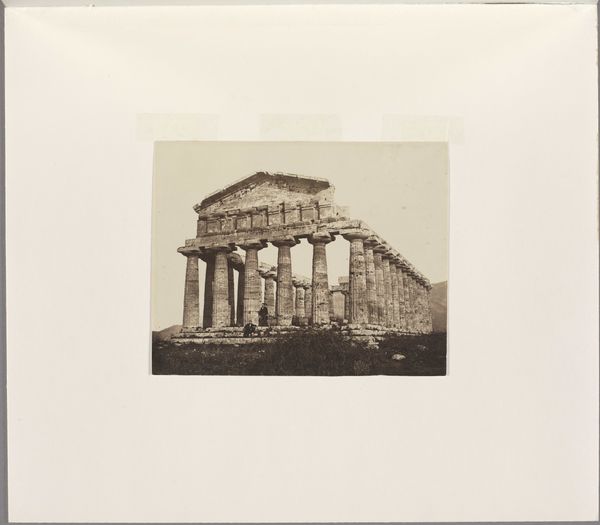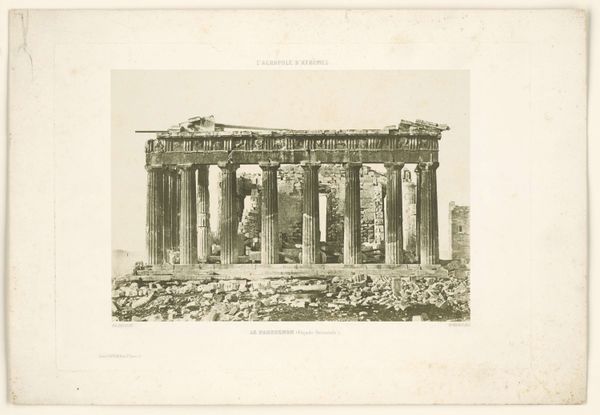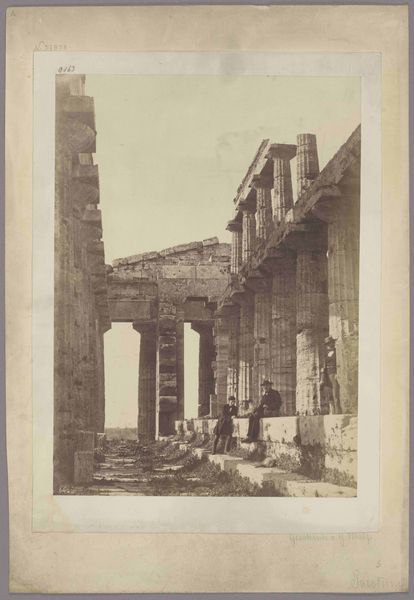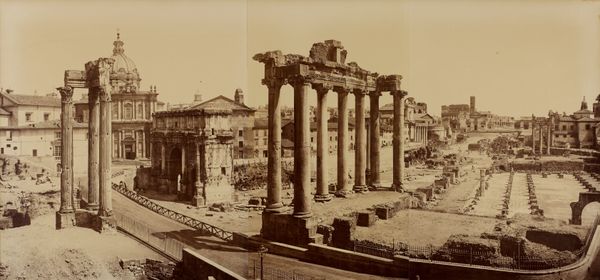
photography, gelatin-silver-print
#
greek-and-roman-art
#
landscape
#
photography
#
ancient-mediterranean
#
gelatin-silver-print
#
cityscape
#
history-painting
Dimensions: height 317 mm, width 445 mm
Copyright: Rijks Museum: Open Domain
Curator: This is Giacomo Brogi's gelatin silver print, “Forum Romanum met Tempel van Saturnus te Rome, Italië," dating from sometime between 1864 and 1881. What’s your initial response? Editor: It feels like a ghost of an empire. The starkness of the ruined columns against that bleached sky...it evokes a palpable sense of loss, doesn't it? All that weathered stone. Curator: Indeed. The image really captures a particular moment of the gaze on the ancient world, but let's unpack that 'loss' a bit. Brogi was part of a wave of photographers who documented the Roman Forum in the 19th century. How do you read the cultural memory here? Editor: The columns of Saturn's temple, even in ruin, still speak of Roman power, of legal tradition, and that deep well of Roman mythology and state religion. Photography here isn’t just about recording decay, but carrying those memories to a new generation. Look how they dwarf us. Curator: Precisely, and the very act of photographing it—distributing these images across Europe—participates in the ongoing construction of "Rome" as this foundational site. Brogi, through his lens, becomes an agent in this colonial appropriation of classical antiquity for 19th-century nation-building narratives. The "grand tour" now available as images to the burgeoning middle classes, as well as the elite. Editor: So it is a mediated experience of history? How can we ever engage authentically with it? What does Brogi do with those loaded visual symbols—the arches, the skeletal structures? Curator: Consider his strategic framing. It's a calculated vista that emphasizes both grandeur and abandonment. The perspective creates this almost cinematic wide angle on this city scape of ruins, while it simultaneously participates in an art-historical convention of romanticizing decline, especially from the late 18th- and 19th centuries. The "decline and fall" made newly present in chemical image-making. Editor: A potent reminder that even documentation is a form of storytelling, charged with selective symbols. I leave with a deeper appreciation of what the stones truly say. Curator: Agreed. I’m compelled to remember history-making always involves strategic choices and viewpoints—about what gets emphasized and who controls the story. It can't be emphasized enough that it still occurs today.
Comments
No comments
Be the first to comment and join the conversation on the ultimate creative platform.
